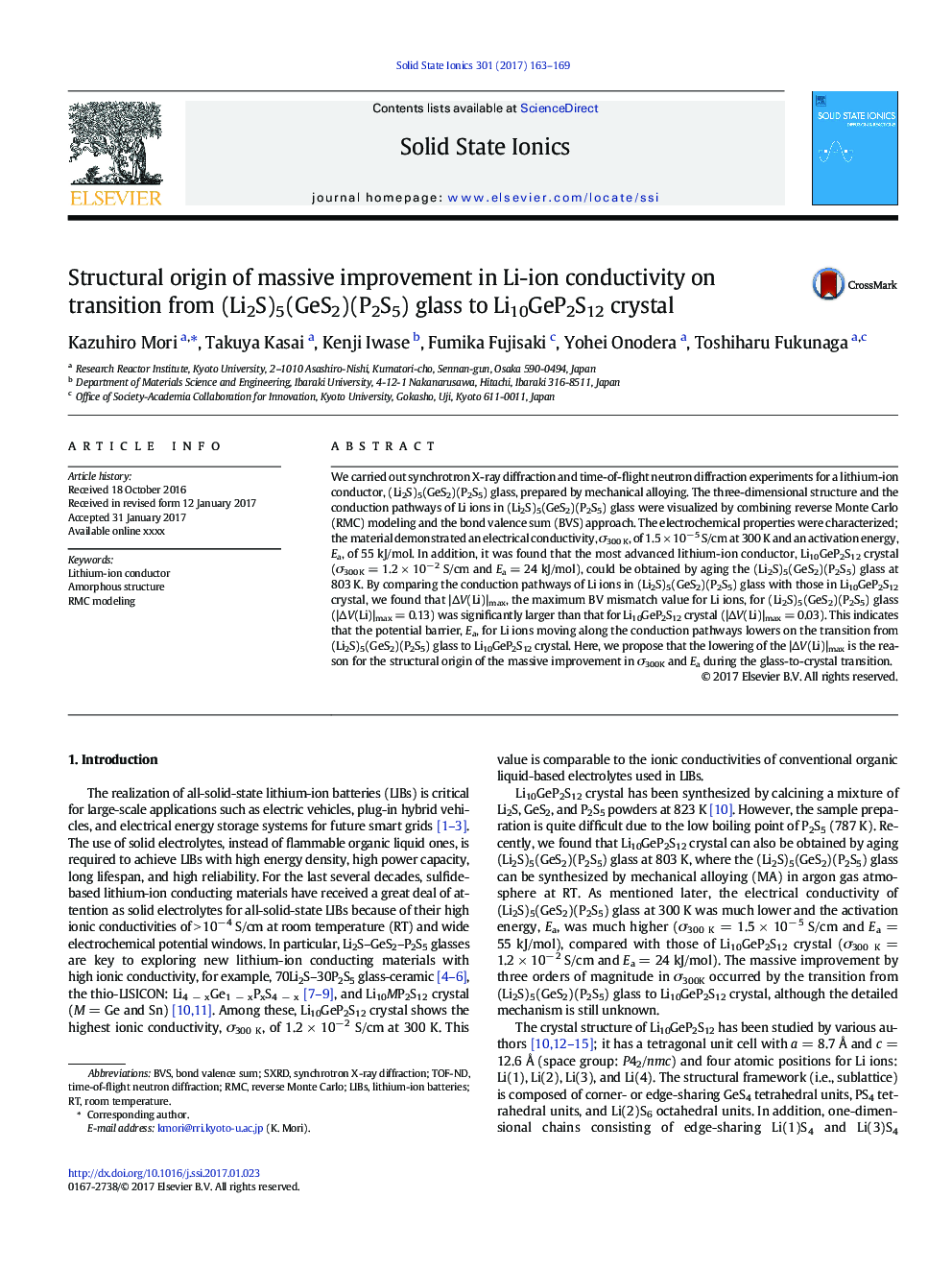| Article ID | Journal | Published Year | Pages | File Type |
|---|---|---|---|---|
| 5150521 | Solid State Ionics | 2017 | 7 Pages |
Abstract
We carried out synchrotron X-ray diffraction and time-of-flight neutron diffraction experiments for a lithium-ion conductor, (Li2S)5(GeS2)(P2S5) glass, prepared by mechanical alloying. The three-dimensional structure and the conduction pathways of Li ions in (Li2S)5(GeS2)(P2S5) glass were visualized by combining reverse Monte Carlo (RMC) modeling and the bond valence sum (BVS) approach. The electrochemical properties were characterized; the material demonstrated an electrical conductivity, Ï300 K, of 1.5 Ã 10â 5 S/cm at 300 K and an activation energy, Ea, of 55 kJ/mol. In addition, it was found that the most advanced lithium-ion conductor, Li10GeP2S12 crystal (Ï300K = 1.2 Ã 10â 2 S/cm and Ea = 24 kJ/mol), could be obtained by aging the (Li2S)5(GeS2)(P2S5) glass at 803 K. By comparing the conduction pathways of Li ions in (Li2S)5(GeS2)(P2S5) glass with those in Li10GeP2S12 crystal, we found that |ÎV(Li)|max, the maximum BV mismatch value for Li ions, for (Li2S)5(GeS2)(P2S5) glass (|ÎV(Li)|max = 0.13) was significantly larger than that for Li10GeP2S12 crystal (|ÎV(Li)|max = 0.03). This indicates that the potential barrier, Ea, for Li ions moving along the conduction pathways lowers on the transition from (Li2S)5(GeS2)(P2S5) glass to Li10GeP2S12 crystal. Here, we propose that the lowering of the |ÎV(Li)|max is the reason for the structural origin of the massive improvement in Ï300K and Ea during the glass-to-crystal transition.
Keywords
Related Topics
Physical Sciences and Engineering
Chemistry
Electrochemistry
Authors
Kazuhiro Mori, Takuya Kasai, Kenji Iwase, Fumika Fujisaki, Yohei Onodera, Toshiharu Fukunaga,
